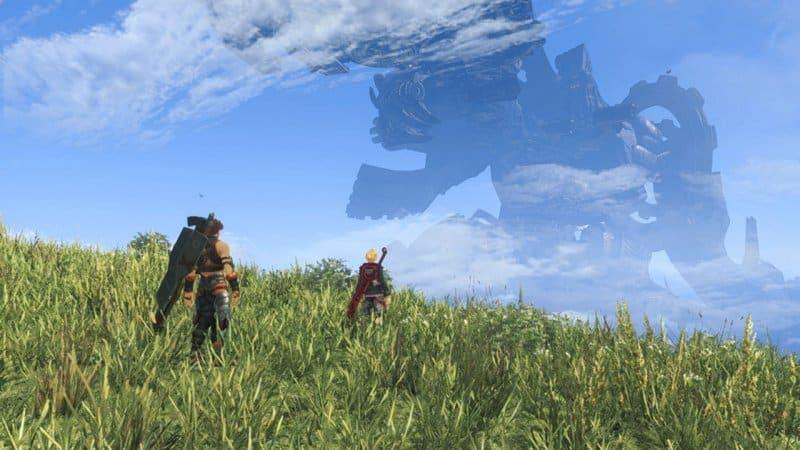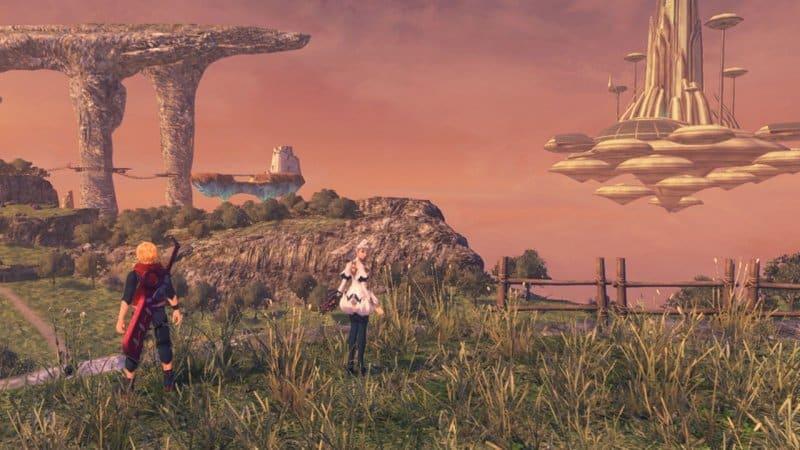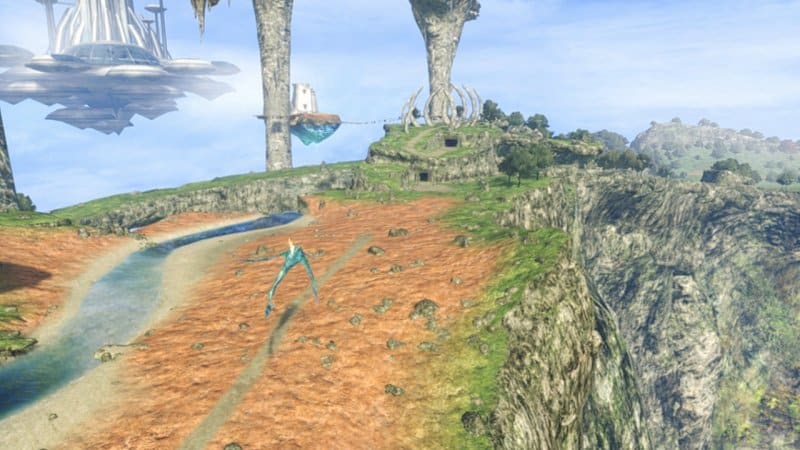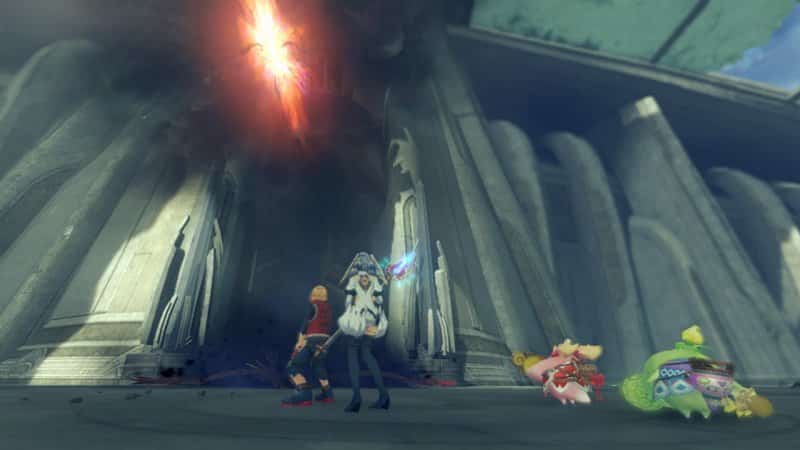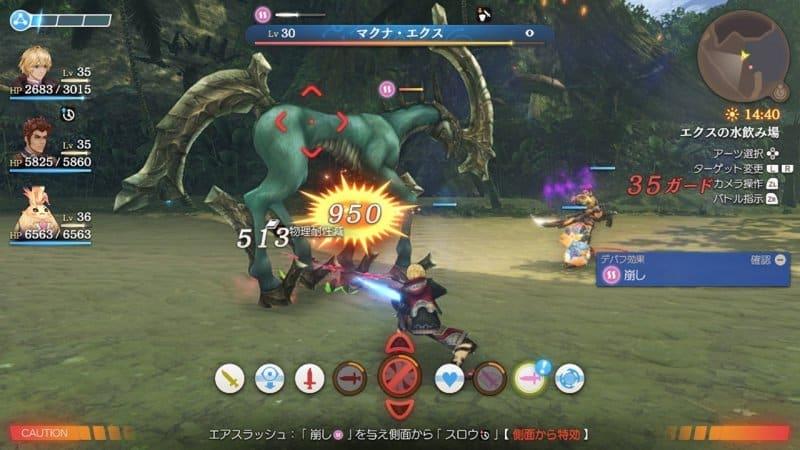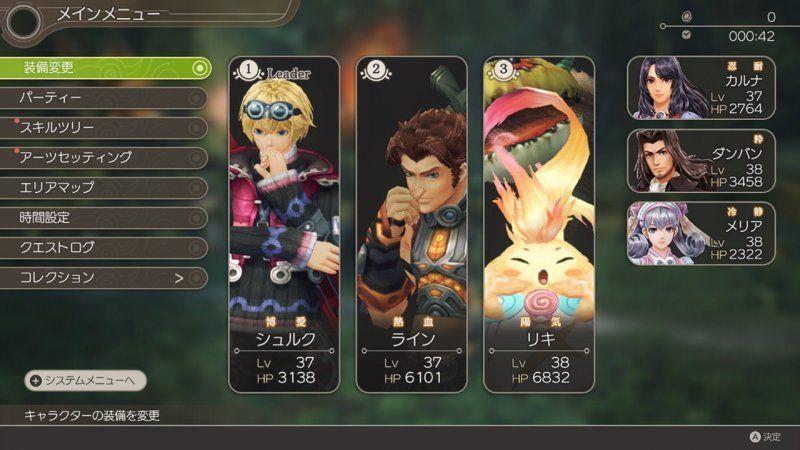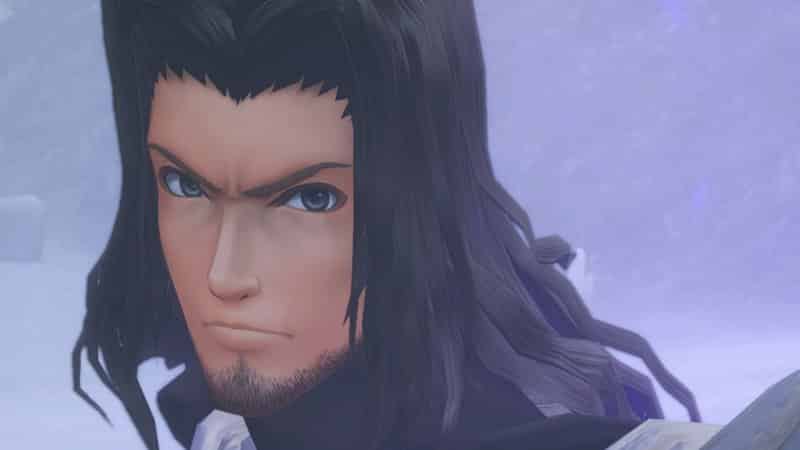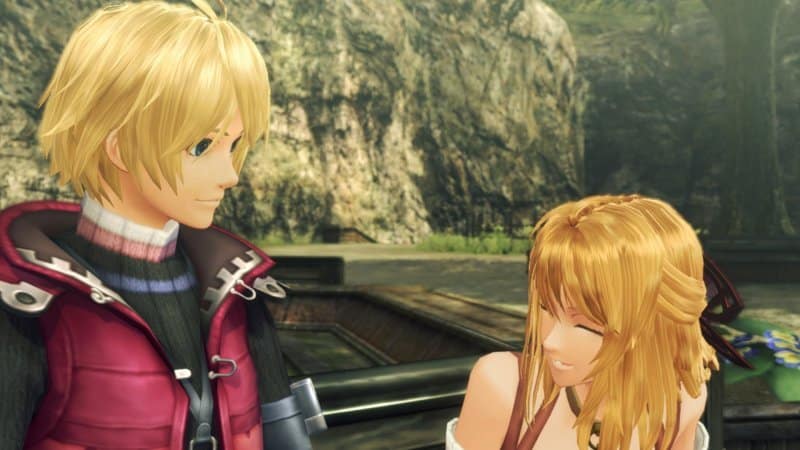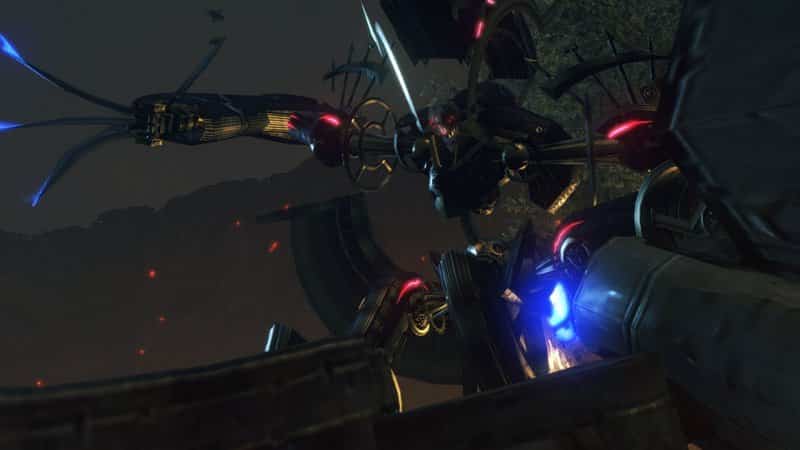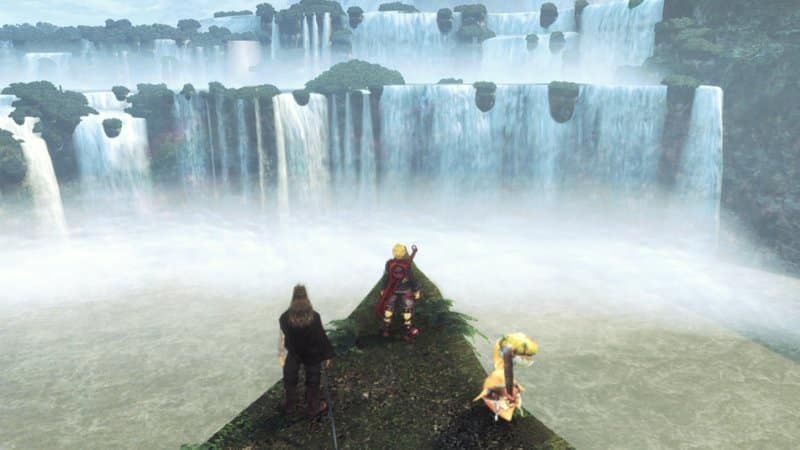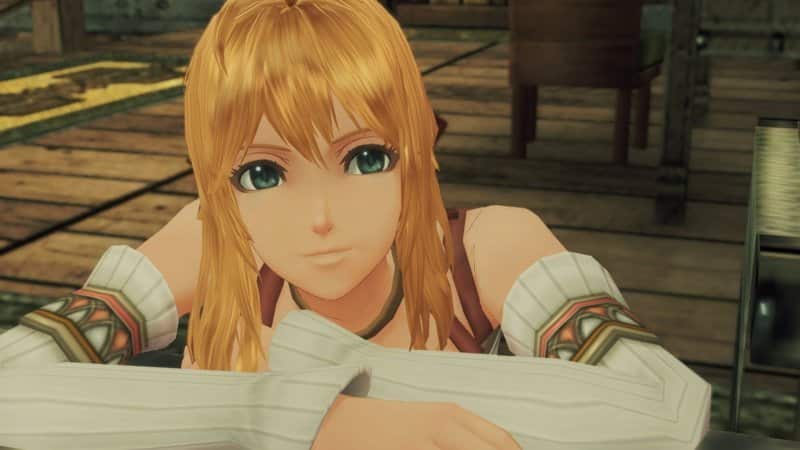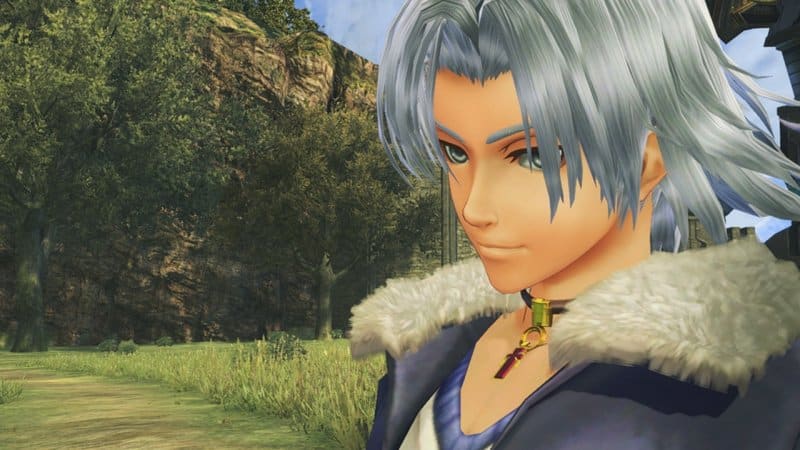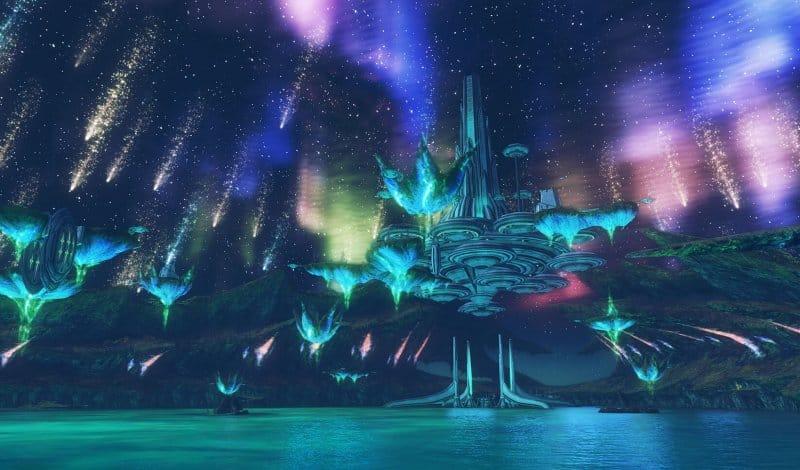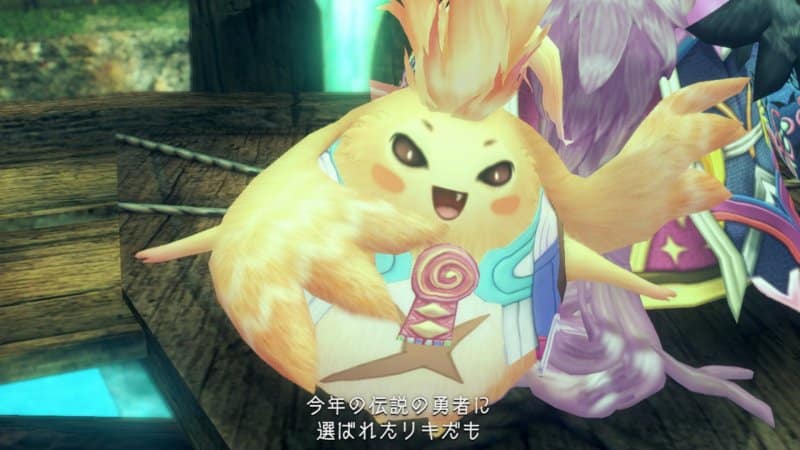As we wrote this review of Xenoblade Chronicles: Definitive Edition, we realised how many things have changed in our lives, and in our favourite hobby, since we played the first release on Nintendo Wii.
Today we’re different people than we were in the summer of 2011, and the market has changed too, for better or for worse.
Japanese role-playing games, after going through a long identity crisis, have resurfaced overwhelmingly and have shown that more philosophies can coexist: that of tradition and experimentation, and everything in between.
And if the genre has courageously embarked on a new path, coming out of the niche it had been forced into for years, it was also and above all thanks to Xenoblade Chronicles, the title that finally consecrated director Tetsuya Takahashi after a career spent settling down.
And so, after so many years and a second, much lesser-known, release on New Nintendo 3DS, Xenoblade Chronicles arrives on Nintendo Switch in pomp and circumstance to end this semester that we spent with nostalgia, almost as if it wanted to close a circle.
It does so with a Definitive Edition difficult to frame, a production halfway between remake and remastering that reminded us immediately why we loved the original title, but also that it is important to contextualize each experience.
On the notes of the amazing main theme composed by Yoko Shimomura, which we listened to for the first time when life was more beautiful, more free, and everything seemed possible, we chose the Extra Story and immediately plunged into the unpublished chapter A Common Future, eager to discover all its secrets.
A common future... or not?
In the next few lines we will try to minimize the anticipation, the terrible spoilers that could ruin the final of Xenoblade Chronicles, in case you have never played it.
You will understand, however, that it would be difficult to analyze what would then be a kind of epilogue, without deepening the subject in respect of those who, however, has already completed a JRPG released almost ten years ago and that perhaps would like to buy the Definitive Edition just for A Common Future, playable from the start by choosing Extra Story from the title screen.
We have to compromise, in short, and we’ll just say that A Common Future takes place a year after the finale of Xenoblade Chronicles and focuses mainly on Melia, an extremely important character who ended up a bit ‘in the background in the last lines of the original script.
A common future brings a few squeezers back on stage and introduces a couple of playable characters who, together with Shulk and Melia, make up the main party.
Nene and Kino are the adorable sons of Riki the Nopon: determined to become heroes like their father, they both provide comic relief in the economy of storytelling, while displaying a surprisingly interesting characterization, and in terms of gameplay they make up for the absence of Reyn and Sharla, using their own techniques in combat.
In this sense, A Common Future, which takes place all on the shoulder of the Bionis, a new map that Monolith Soft had drawn many years ago but hadn’t been able to implement completely for reasons of time, clearly takes the connotations of a late and never published DLC: it shares with the original game the same, identical structure and, from the point of view of the plot, it just closes some storylines, winking at the existence of a multiverse in which Takahashi could set new adventures.
That said, we will be very clear, especially towards those who have known this franchise on Switch with Xenoblade Chronicles: don’t expect special appearances, strange crossovers or direct references to other works of the Japanese software house.
In this sense, we admit we were a little disappointed, as the fanboy inside us was really hoping for a breakthrough that would connect all those dots that we saw in the ending of Xenoblade Chronicles 2 or even send us back to the late Xenoblade Chronicles X for Wii U.
Despite the disappointment, A Common Future is still a good thing that does justice to the world of Shulk and company with a dry and satisfying ending that we achieved in about ten hours of gameplay after completing each secondary mission.
A more than discreet duration for what’s only an appendix, albeit much less than Torna ~ The Golden Country that Monolith Soft had rightly branded as a real expansion.
Various improvements
A common future seems in all respects an extension of Xenoblade Chronicles in terms of how it’s structured and how it’s played, and as such also feels the full weight of its ten years when you start talking about side quests, real fetch quests in which you have to kill a number of enemies or collect items that appear around the map.
It’s the aspect that probably aged worse than the whole package, even compared to what was played in Xenoblade Chronicles 2, where the fetch quests abounded but were often accompanied by cured cinematic and motivations a little less pretentious.
We’ve already talked about the combat system in our test two weeks ago – to which we refer you if you want to know more about the differences between the Extra Story and the original title, including the new Prospectors mechanics that replaces the Group Assault – but it’s important to point out that today the fighting arouses mixed feelings.
The combat system in Xenoblade Chronicles: Definitive Edition in 2020 certainly seems less elaborate than in Xenoblade Chronicles 2, almost experimental in comparison, with the techniques to choose one at a time without assigning them to shortcuts or similar.
However, it remains immediate and intuitive, although it evolves little during the course of the game, especially if we consider that in the sequel new mechanics were unlocked even at fifty hours played, as well as enjoyable and addictive thanks to the clear distinction between the various characters, the ability to alter their roles by acting on the Skill Lines – although absent in A Common Future – and the peculiar capabilities of the Monad sword that transform the power of Shulk’s foreknowledge into a real element of gameplay.
Monolith Soft has been tweaking the interface, streamlining it and redesigning it to reduce its on-screen invasiveness, the first in a long series of improvements that have upgraded a ten-year-old title to today’s standards.
The developer did not just review the interface in combat, but every single menu, screen or function.
The chaotic inventory and limited screenshot of the original equipment are now much easier to consult, and Monolith Soft has even found space to add the ability to choose the look of every single accessory worn: a much appreciated innovation, if you consider the amount and variety of items in the game, which finds an obvious and functional place right under the equipment slots, in the same screen.
We could do the same thing for the Collection screen, the Empathic Dialogues and especially the Diagram Understanding, now much clearer and more precise, which allows you to know all the details of the most important NPCs with a quick glance.
In this sense, obviously aware of the criticism directed to the repetitiveness of the fetch quest mentioned above, but especially to the lack of clarity of the original maps, Takahashi’s guys have well thought to put hand also to this aspect of the game, retouching down some numbers and redrawing some maps, now easier to consult and provided with new options, such as the ability to put custom dots or display the map in overlay during exploration.
Thanks to a whole series of shortcuts, which open the most important menus from the game screen in a snap, the experience has appeared to us to be much improved in terms of immediacy and accessibility, which is not something to google.
None of these implementations change what Xenoblade Chronicles has been all these years: a huge, challenging and content-rich JRPG.
With an eye to the less scrupulous players, and especially to those who have approached the franchise with Xenoblade Chronicles 2, the Japanese developer has well thought to implement a wide range of new options that allow a moderate customization of the game interface, but also and above all the level of difficulty.
We are talking about what the Definitive Edition calls Casual Mode and Pro Mode: the former simply lowers the level of difficulty of the game, reducing the statistics of enemies to allow those who only want to enjoy the story to wipe them out without too many pathologies.
In fact, this setting doesn’t automate the fighting as you might think, since it still requires a minimum of familiarity and skill, but it certainly makes battles with certain bosses or special enemies much easier.
Pro Mode, on the other hand, drastically changes another aspect of the game, namely the allocation of experience points earned by completing side quests: instead of being added immediately to those possessed by the individual characters in the group, the points end up in a sort of common tank.
It’s up to the player to decide when to assign the experience points saved, acting artificially on the levels of the individual characters and, ultimately, on the difficulty curve in general. Pro Mode is simply the same mechanism used in Xenoblade Chronicles 2: it’s used to customise the flow of experience points in a game that overflows with enemies to defeat, missions to complete, areas to discover and more.
The two modes are not mutually exclusive, so the player can activate them individually or simultaneously at any time, setting their own pace of growth and generic difficulty level balance. That’s good thinking, that’s all there is to it.
Against the clock
Surprise surprise, A Common Future is not the only unpublished content implemented in this Definitive Edition.
Although the original title has remained fundamentally unchanged, Monolith Soft has thought well to add a little extra called Against the clock that caught us a bit off guard when we reached the Leg of the Bionis and we were faced with a kind of interdimensional gap that on Wii and Nintendo 3DS just wasn’t there.
These gaps, which you’ll find scattered around the game world, all lead to the same place: a kind of temple where a mysterious Nopon – or rather, a Saggiopon – will challenge you to face a series of time trials that will increase as you continue through the storyline.
The challenges in question are divided into two categories: Free and Limited. You can face the former with the characters you prefer, respecting the level they have already reached, the equipment they wear and the techniques you have set.
The Limited Challenges, on the other hand, impose a very precise composition of the group and force you to use a specific character.
Once the challenge has been selected, the player is catapulted into a specific arena where he or she must face one or more waves of enemies, using what he or she has learned so far.
By overcoming these challenges in time with the best ratings, you get good quality equipment that make up some new costumes and not a little eccentric for individual characters: if you want to dress Sharla as a pirate, in short, you have to go through here.
Not only that: by repeatedly playing the various challenges, you also accumulate the Nopon Crystals, a currency that you can exchange with Saggiopon for other accessories, gems to be set in the equipment or manuals that allow you to sublimate the techniques of the various characters at maximum power.
An extra content not particularly brilliant, in short, but certainly appreciable, which further prolongs an experience already particularly long-lived in itself.
Change of look
So let’s come to the most delicate issue: the new look of Xenoblade Chronicles.
We are aware that there are some fans who didn’t appreciate the new cartoon style, but nobody should be surprised that Monolith Soft chose this character design.
Considering the decisive steering of Xenoblade Chronicles 2, and the fact that Shulk and Fiora had already appeared in a DLC of that game with a much more cartoonish look, it’s logical to assume that this was the look that Takahashi and his people would have wanted to show off from the beginning.
The good news is that Xenoblade Chronicles: Definitive Edition abandons the exaggerations and eccentricities of Xenoblade Chronicles 2 in favour of a drier, more proportionate design. After all, this is not a remake or even a remastered, but what we could consider a middle way.
Despite having changed the graphics engine, Monolith Soft has not completely redesigned the game, but has increased the resolution of most of the textures and the number of polygons in 3D models, improving in all respects the visual impact of a game that already ten years ago seemed majestic.
Today the visual impact is noticeably better, thanks also to the renewed color palette and the brand new dynamic lighting, but there are still some traces of the past, especially if you dwell on some minor textures that may end up in the foreground like a nasty slap.
Nothing worth pointing out, in all honesty, when every other shot returns a variety of details that completely overshadows the original Wii edition. Only the cinematic remakes are worth the price of this ticket: the characters now display a variety of expressions that embellish the most important scenes, involving the player even more than in the past.
It may seem that there is some steep price to pay, especially when you set foot in the Sea of Eryth or the magnificent Makna Forest and admire the sublime landscapes, but the truth is that there is not.
There aren’t too long loads to wait for, or annoying drops in frame rates during the most excited fights. Everything runs smoothly as oil; the loadings in the digital version are often lightning fast or last a few seconds at most even when you move from one point to another of the map, the menus open and close instantly, everything is responsive and timely.
Monolith Soft has even retouched the volume of the dubbing, famous for being very low in the original title, and while it was there has even implemented an option to choose whether to listen to the original music or the new rearrangements that, incidentally, are excellent, just in case you need to emphasize once again how amazing is the soundtrack composed by Manami Kiyota, ACE+ and Yoko Shimomura.
Without dwelling on tedious technicalities, by mumbling numbers that leave the time they find, we can say that Monolith Soft has managed to return a spotless image: don’t expect an always impeccable definition, especially if you move the frame away to embrace the panoramas in their entirety, but not even a marked pixillated dirt.
The view is excellent not only with Switch in the Dock, but also in portable mode: the images impressed us for their clarity and fluidity in general, allowed by the choice to adopt a lower resolution to ensure the stability of the frames, which, however, does not affect the final rendering. In short, it doesn’t make much sense to get fleas at the resolution, because at the end of the Xenoblade Chronicles: Definitive Edition fair we thought it was a significant step forward compared to Xenoblade Chronicles 2.
In light of these considerations, we can not help but promote this re-release of the title that delivered Tetsuya Takahashi and his team to the Olympus of exclusive Nintendo, a title that over the years has become increasingly famous as difficult to recover, and which absolutely deserved a round of victory in modern times.
This Definitive Edition, while remaining true to the original work, ushers in a new course in the philosophy of re-proposals that has been taking hold for some time now with remastering and remakes, and we can only hope that this Definitive Edition will draw attention to itself and inspire other companies to resurrect some other never-forgotten classic.
Our opinion
After careful consideration, for Xenoblade Chronicles: Definitive Edition we decided to reconfirm the original vote we had given to Xenoblade Chronicles on Wii: yes, times have changed and the title Monolith Soft now more than ever shows some aches and pains that in 2011 we forgave him without problems, but the improvements made in the round compensate for the weaker aspects.
The ratings are dry numbers, let’s face it: we’re not telling you that Xenoblade Chronicles: Definitive Edition is an almost perfect title, but it still represents one of the highest peaks reached by the JRPG genre. It deserves your attention if you love the genre and even if you don’t love it because, honestly, you are always in time to fall in love with it, and games that have this power are starting to become increasingly rare and precious.
Pros
- Many small edges have been filed down, blunted and aged.
- Additional content prolongs an already mammoth experience in itself.
- It is simply one of the best JRPGs ever developed.
Cons
- The story of A Common Future may disappoint the expectations of some fans.
- Side missions remain the weakest point of the package.
What do you think?
Comment below!
